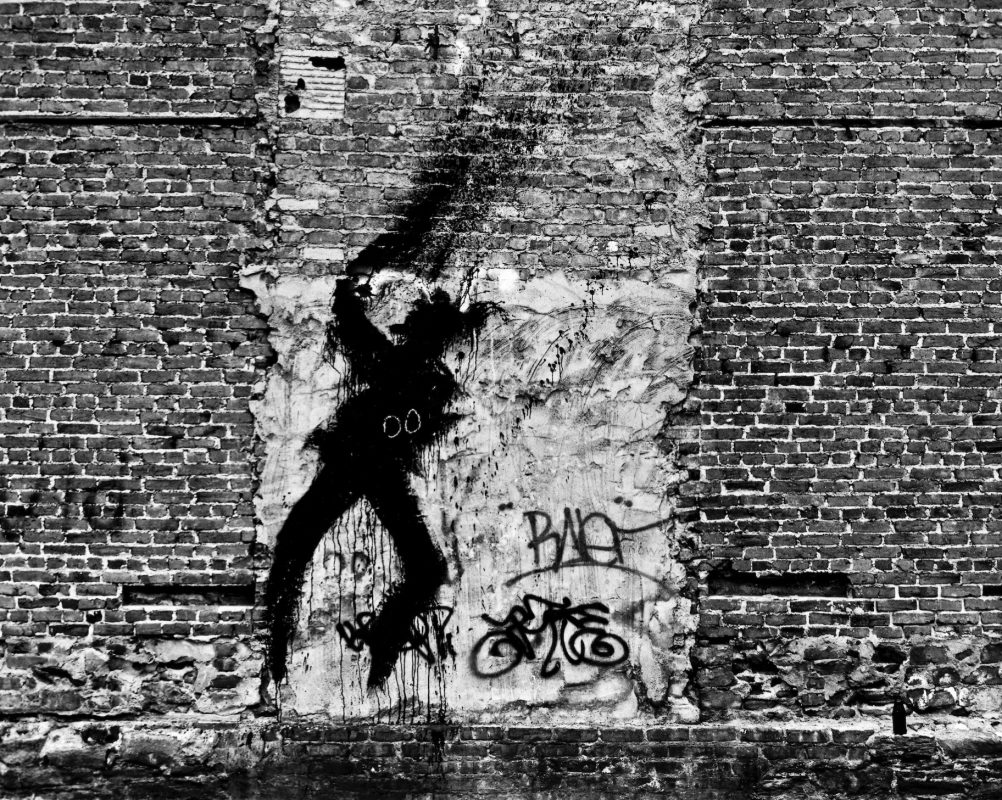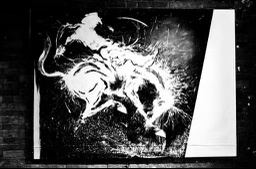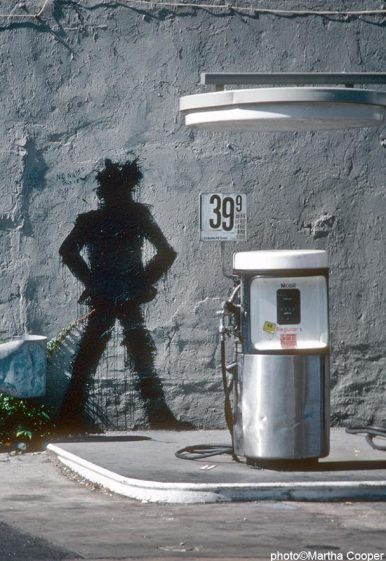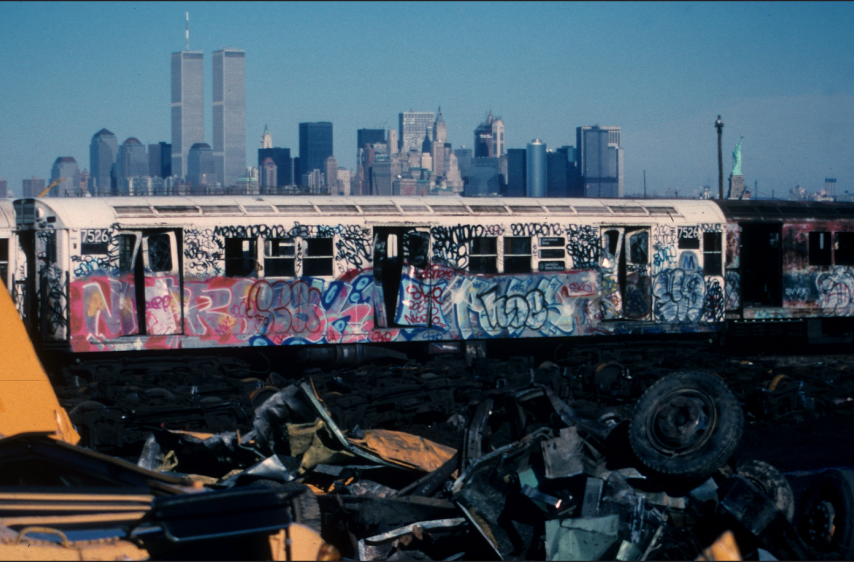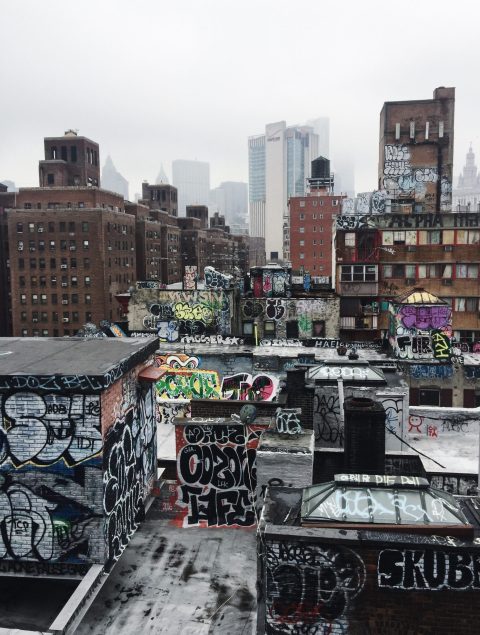Conscious Darkness: Richard Hambleton (Part 3)
CONSCIOUS DARKNESS
“No one can become conscious of the shadow without considerable moral effort. To become conscious of it involves recognizing the dark aspects of the personality as present and real. This act is the essential condition for any kind of self-knowledge.”
-CG Jung
Continued from Part 2
Richard was prepared for the big time the second time around. After a few false starts, bringing major galleries to visit when he nonchalantly had nothing to show, or inviting high profile collectors when Richard did not deign to answer the doorbell. But eventually my father engineered some connections and even I assisted in bringing his painting to the world stage, where it belonged, once again. Andy Valmorbida, Vladamir Roitfeld and Giorgio Armani stepped in, both barrels blazing. In short order the Shadow Man would have international exhibits, TV and magazine appearances, beautiful and famous fans and collectors, and a great documentary based on his life story. Bright blossoms springing up after a harsh winter. My visits with Richard grew more scarce. No more phone calls to invite my model or pot dealer friends to admire his new works. But we remained dear friends. Occasionally I would visit him in his Orchard Street compound, and there, just like the famous lovers from the Triumph Of Death, I’d find Richard lazing on the daybed in front of the TV with his loyal Gigi, Puerto Rican aristocrat and partner in crime, an elegant Surrealist assistant answering the ever-ringing telephone with her mulberry velvet opera gloves, fielding inquiries from abroad in her lilting Eastern bloc accent. I’d move some paint-stained newspapers and debauched take-out containers to sit and chat. Richard opened to a fashion spread from the Sunday Times supplement, and blacked out the bodies with a magic marker. Nebulous resin landscapes from the Beautiful Series dried on the walls, Island of the Dead as viewed through the blood surging into the cloudy liquids of a junkie’s syringe.
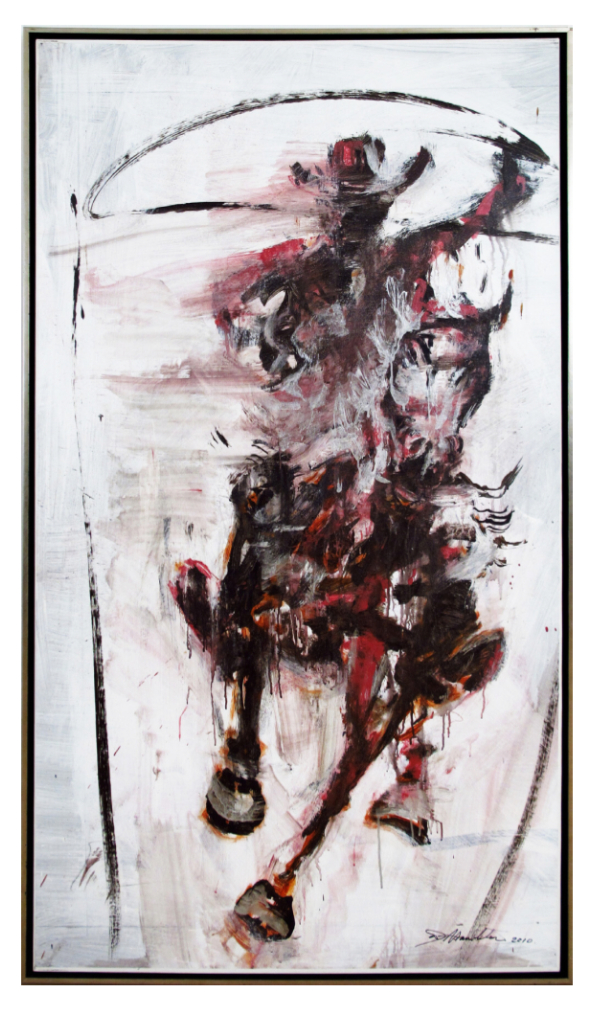
Richard Hambleton
Horse and Rider
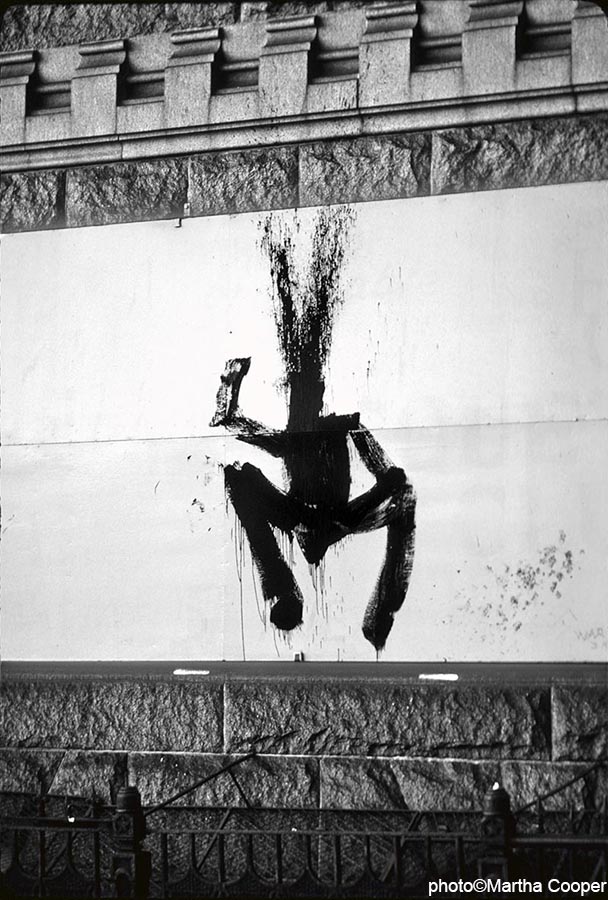
A “Shadow Man” by Richard Hambleton
Photo by Martha Cooper
The ravages of good times were catching up with Richard. He would show up at society functions on his squeaky folding bike, still handsome but bandaged like a fighter pilot shot down, hobbling like a man twice his age. A collector made a joke in bad taste that soon Richard would be gone, and our collections would shoot up in price. I admonished him not to be so sure; Richard had been dangling over this abyss for ages and was liable to bury us all. Alas the small bandage on his nose would be swapped for a face mask as the condition spread, and soon large portions of his face went missing like the Sphinx. It was terrible to see, especially when you cared for him, and yet his courage and joie de vivre never wavered. He took the degeneration of his physical form as a matter of course; he was evolving into the fearsome Shadow of his fantasies. Collectors began to clamor for his Eighties catalogue, but he was still churning out work to his last moments on earth, every bit as vital, in spite of mounting adversity.
Just when I thought he must be sitting pretty once again, he called to report he was being evicted from his apartment. Surely it was some ploy to hustle another five hundred bucks from me, but this time he was in earnest. All was lost. He and Gigi crashed on my couch for three days, smoking, laughing at cartoons, concocting funky delicacies with cans of tuna, Campbells soup and cartons of vitamin D milk, their every belonging spilling out of suitcases on my living room floor. Thank God pops arranged a long term hotel for the lovers in Soho and it was there he mounted his brave last stand. But before leaving me on that intolerable sojourn, so sweet in retrospect, he left a shadow man on the inside of my front door, a sentinel with the built-in peephole standing in for a single cyclops eye.
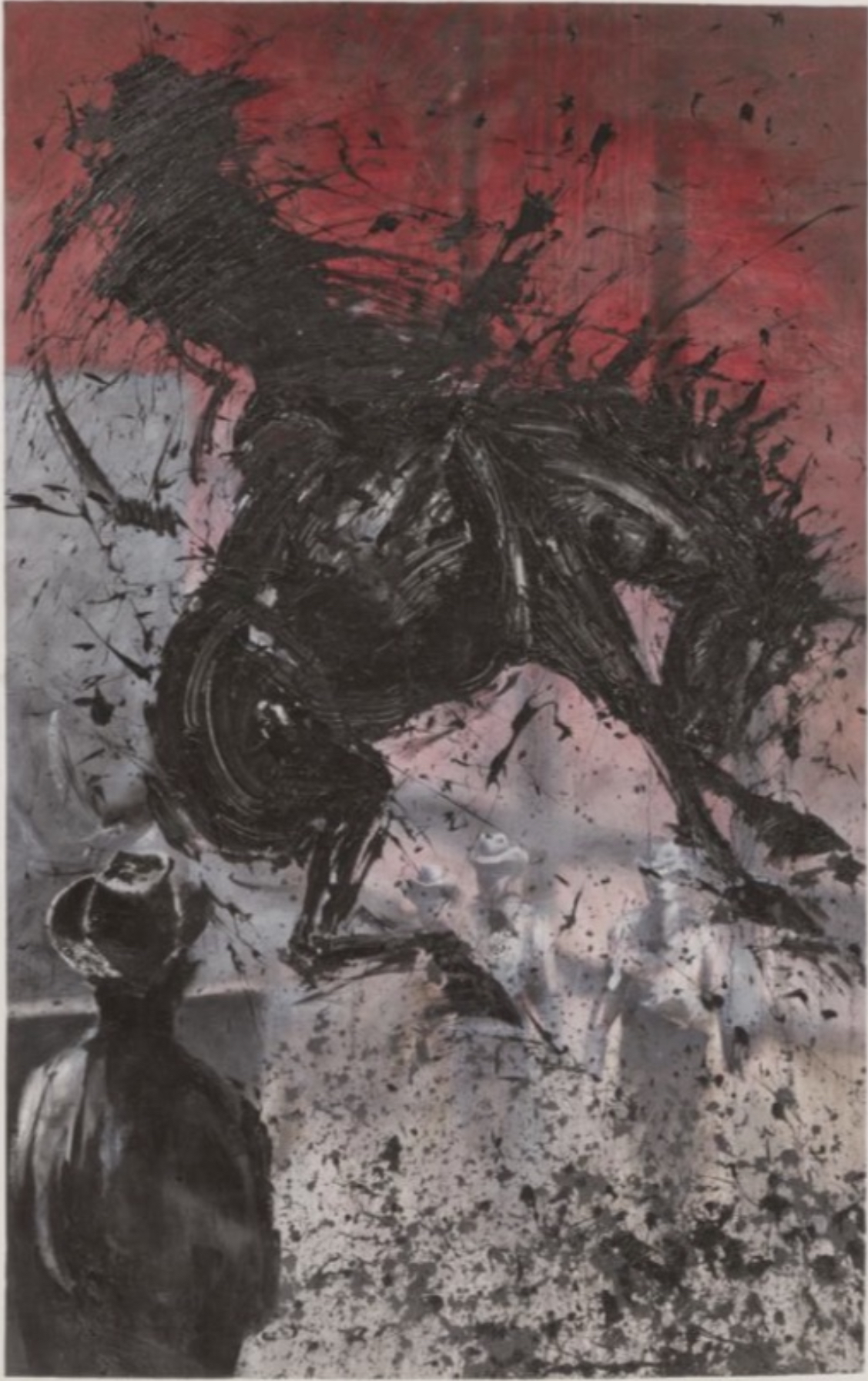
Richard Hambleton
Horse and Rider
Richard grew more and more frail, and like Philippe Petit now seemed to be averting a cataclysm with every sure step, while we all watched on helplessly. I think it was my last meeting with him that taught me most about the core character of his being, showing me how to be a man in the truest sense of the word. I was opening a café and wanted him to paint something on the wall. He told me to pick him up at the hotel, and to bring three hundred dollars so he could get “right” first. He made me wait in the stuffy bathroom while his shadowy acquaintance was summoned, and I could hear Richard fixing in the other room. After what felt like hours, he was ready, surgeon’s mask barely covering the facial anatomy lost to decay, we walked the immeasurably long block from the hotel to my café together. His powerful Rodin hand clung to my shoulder to keep him from tumbling over, each step he would stop to wheeze and catch his breath. He was dying. And by asking him this favor, I was killing him. As badly as I wanted him to paint at my café, I told him we should turn back, that I would deposit him back in bed beside his loyal Gigi, and we could paint some other day. In the throes of what must have been unspeakable agony, he refused to surrender. “No, I am going to paint!” And paint he did, as powerfully as he ever had. I enlisted two lovely girls to assist him, a docile Rastafarian sister, and a Jazz drummer’s sage daughter. They refilled his iced coca colas and urged him on as he brought the monumental head and shoulders into existence with turbulent flourishes of liquid black paint, one last Shadow Man.
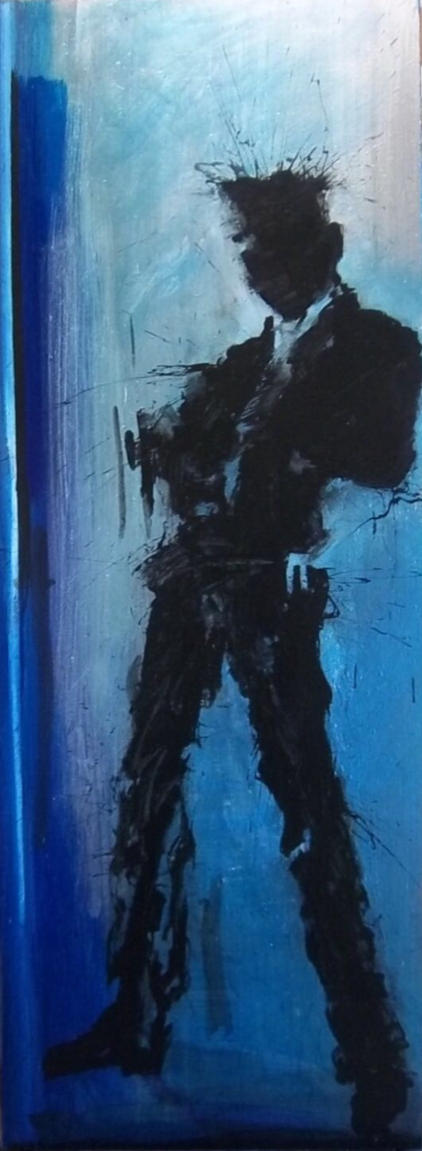
Richard Hambleton
Shadow Man
Conscious Darkness: Richard Hambleton (Part 3) Read More »
Artist Profile, Editorial